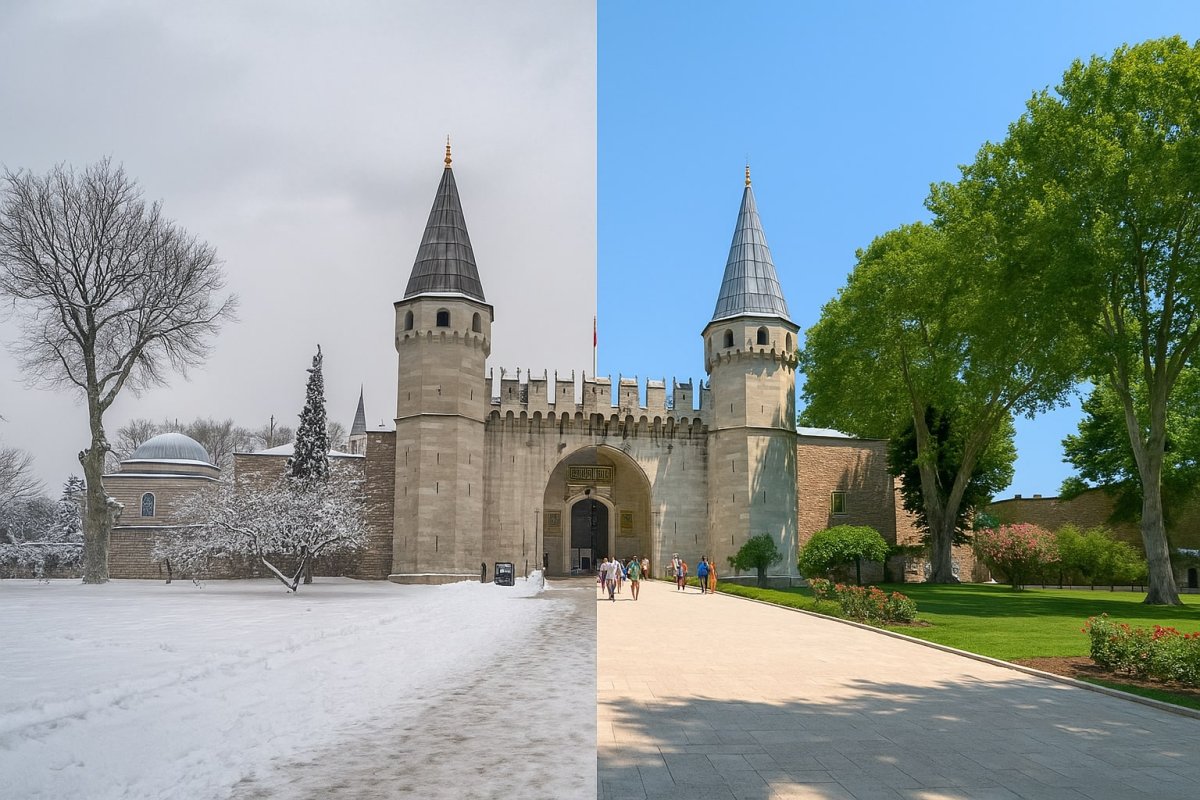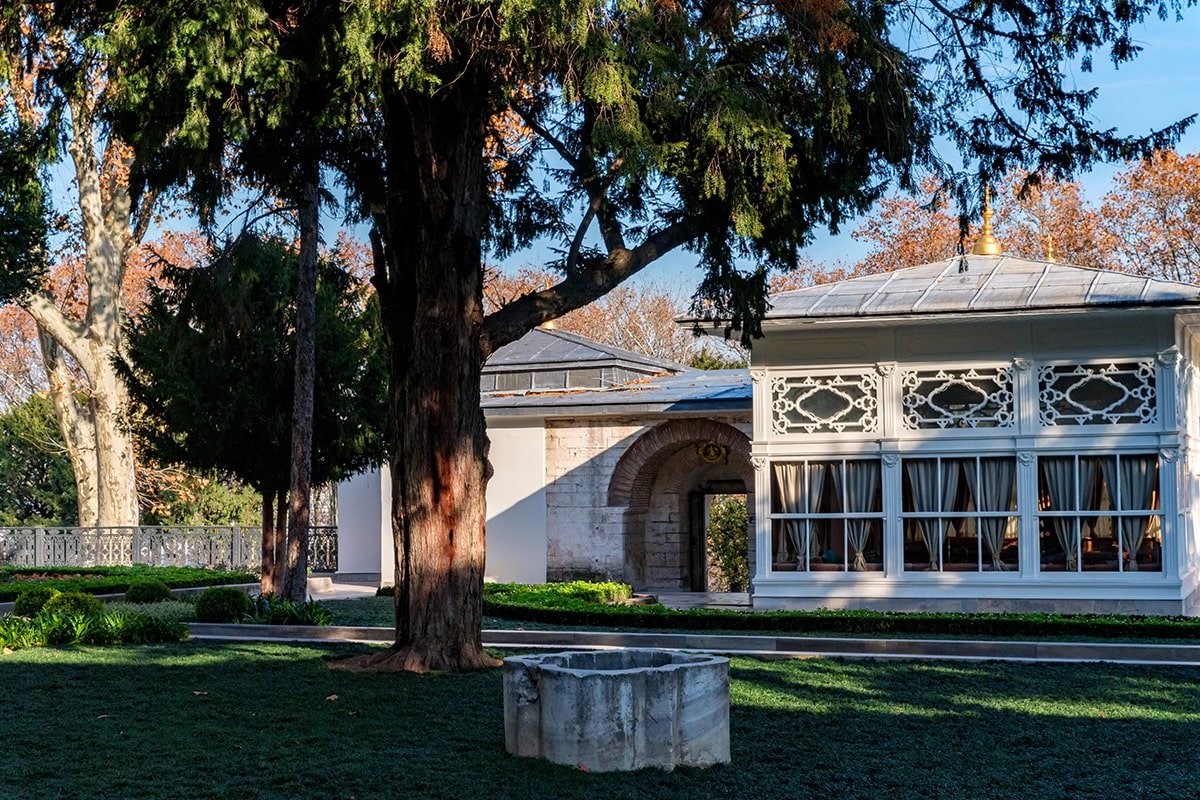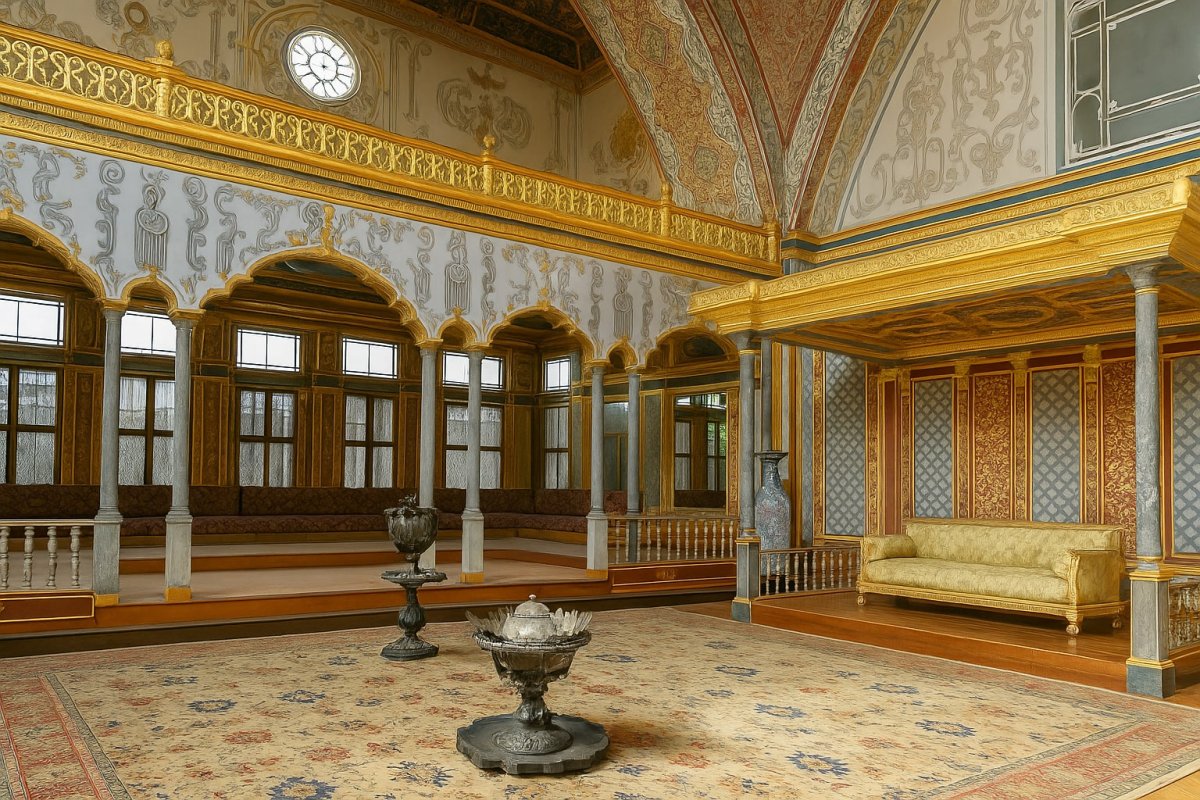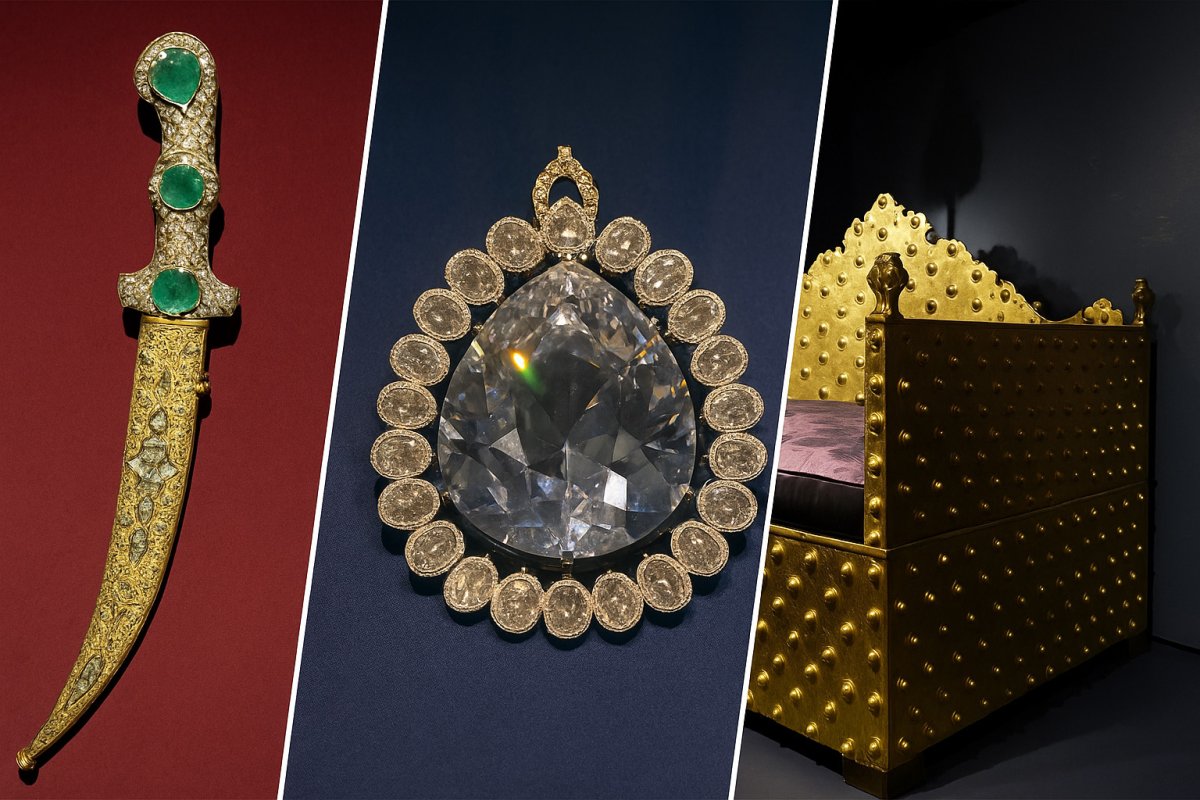Topkapi Palace is a must-see in Istanbul no matter the season, but the time of year you choose to visit will shape your experience. From long summer days filled with sunlight to quiet winter mornings with fewer crowds, each season offers unique advantages and challenges. This guide will help you plan your visit in both summer and winter.
Visiting in Summer
Summer is the high season for tourism in Istanbul, and Topkapi Palace is no exception. Between June and September, expect large crowds and hot weather, especially in July and August when temperatures can reach 30°C (86°F) or more.
Advantages of Summer Visits
- Extended daylight hours: You’ll have more time to explore the palace courtyards and nearby attractions.
- Lively atmosphere: The palace is full of energy with international visitors and guided tours.
- Beautiful gardens: The courtyards and surrounding Gülhane Park are lush and vibrant in the summer sun.
Tips for Summer Visits
- Arrive early in the morning to avoid midday heat and heavy crowds.
- Bring water, sunscreen, and a hat, as shaded areas are limited in the palace grounds.
- Book skip-the-line tickets to save time.
Visiting in Winter
Winter (December to February) brings cooler temperatures, often between 5–10°C (41–50°F). Snow is rare but possible, creating a magical setting for the palace. The biggest advantage of winter visits is the dramatic drop in crowds.
Advantages of Winter Visits
- Fewer visitors: Explore the palace halls and courtyards in peace, without long lines.
- Atmospheric experience: The Harem and Treasury feel even more mysterious in the soft winter light.
- Lower accommodation costs: Istanbul hotels are generally more affordable in the off-season.
Tips for Winter Visits
- Wear warm clothing, especially for the outdoor courtyards exposed to wind from the Bosphorus.
- Check opening hours as they may be shorter in winter months.
- Bring an umbrella or raincoat — Istanbul winters can be rainy.
Which Season is Best?
If you want lively energy, warm weather, and long sightseeing days, summer is ideal. If you prefer quieter, more contemplative exploration with fewer crowds, winter is the better choice. Many repeat visitors even say the palace feels more authentic in the winter, when you can pause and absorb the details without the rush.
Conclusion
There’s no bad time to visit Topkapi Palace, but knowing what to expect in each season ensures you make the most of your experience. Whether bathed in summer sunlight or touched by the quiet chill of winter, the palace never loses its grandeur. Plan your visit today and enjoy Topkapi Palace in every season.





